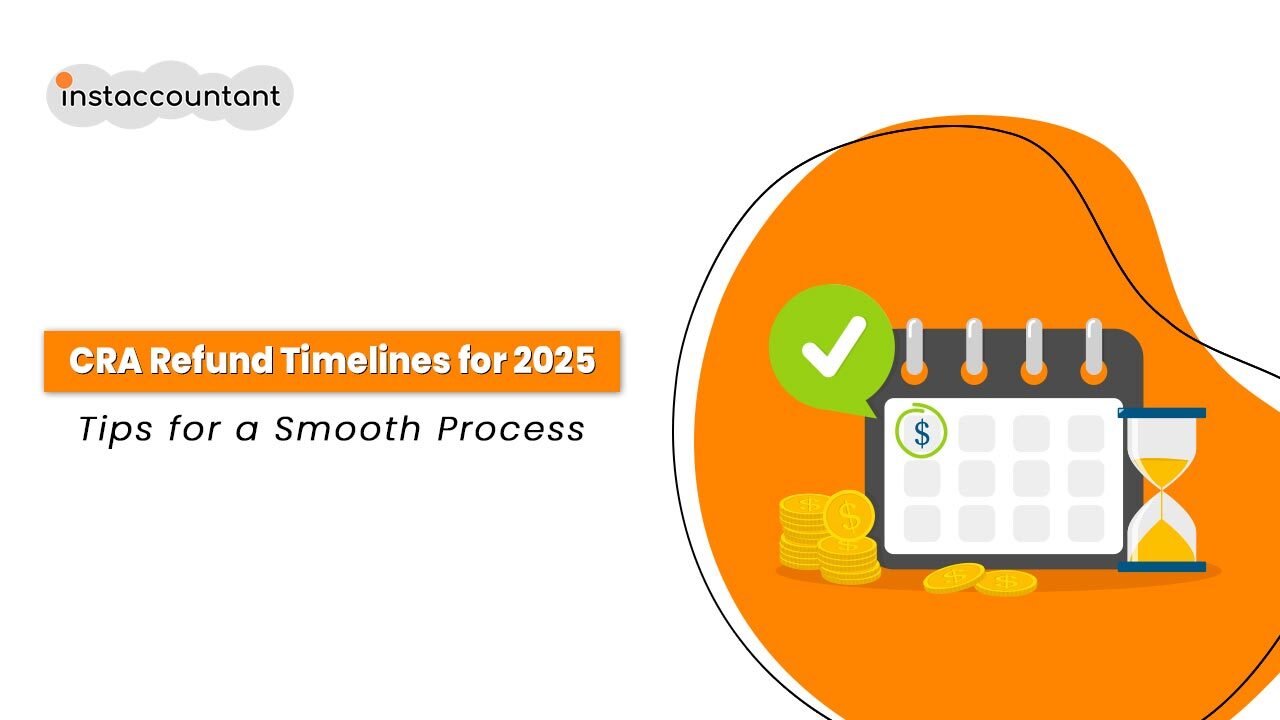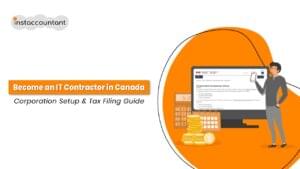Tax season has wrapped up, and now you’re likely asking, “When Will I Get My Tax Refund?” We totally understand how important that money can be, whether you’re planning to pay bills, save up or treat yourself. While the Canada Revenue Agency (CRA) aims to process refunds quickly, various factors can either speed things up or cause delays. The proactive steps you can take to stay informed will empower you with realistic expectations and the ability to track your refund effectively. For a specific breakdown of the CRA timelines for your refund as a Canadian taxpayer, we have below a detailed discussion of everything you should know about when it comes to receiving your money.
Understanding CRA Tax Refund Timelines
When it comes to getting your tax refund from the Canada Revenue Agency (CRA), the speed of your refund can really vary based on how you filed your taxes and your own personal circumstances.
1. Online Filing with Direct Deposit
For the digitally savvy taxpayer who embraces the speed and convenience of online filing through NETFILE-certified tax software, coupled with the efficiency of direct deposit, the CRA generally operates with remarkable speed.
Typical Timeline: When you file online, the CRA automate the processing of your return, which speeds things up because there’s less manual handling involved. Direct deposit means electronic transfer of funds directly into your bank account, no mail delays and no manual cheque processing.
Why it’s so fast: Online filing allows for automated data processing, minimizing manual intervention. Direct deposit facilitates a seamless electronic transfer of funds directly into your designated bank account, eliminating mail delays and manual cheque processing.
Expert Tip: If you file online early in the tax season, you could see your refund in as little as 10 business days. It’s best to avoid waiting until the last minute because, during peak times, the CRA’s systems handle many more returns, which can slow things down.
Crucial Detail: Ensure your direct deposit information (bank name, branch number, and account number) is absolutely accurate within your CRA My Account or the tax software you used. A tiny mistake can hold up your refund, so double-check everything before you submit.
2. Paper Filing
Opting for the traditional method of printing, manually completing, and mailing your tax return introduces a more manual and time-intensive process for the CRA.
Typical Timeline: If you file a paper return, be prepared for a considerably longer waiting period. Refunds for paper-filed returns can take anywhere from 6 to 8 weeks and potentially even longer (upwards of 8-12 weeks), especially during the peak tax season rush (March-April).
Why the delay: Paper returns require manual data entry by CRA staff, which is inherently slower than electronic processing. Physical cheques need to be printed and mailed, adding further delays.
Expert Tip: Even if you file on paper, set up direct deposit with the CRA. This won’t speed up the processing of your return but will get your refund to you much faster. You can set up direct deposit on a separate form mailed to the CRA or through your CRA My Account if you can register before filing.
Crucial Detail: Ensure you mail your paper return to the correct CRA tax center based on your province or territory of residence. Mailing it to the wrong address will inevitably cause processing delays. The correct mailing addresses are available on the CRA website.
Key Factors That Can Accelerate or Delay Your Refund
While the online vs. paper dichotomy is primary, numerous other factors can influence your refund timeline:
1. The Return Accuracy:
A complete, accurate and error free return will zip through the CRA’s systems much faster. Mistakes, omissions or inconsistencies will trigger manual reviews, requests for more info and delays in your refund.
Take your time when preparing your return. Double-check all your personal information (SIN, address, marital status), income details (from all T-slips), and claimed deductions and credits. Utilize tax software’s error-checking features if filing online. Ensure all your T-slips (T4, T4A, T2202, T5, etc.) are complete and accurately reflect the amounts you’re reporting. Missing slips will definitely cause delays.
2. Simple vs. Complex Tax Situations:
If you have multiple sources of income (multiple streams), like a job (T4), freelance work, investments, or rental properties. In that case, the Canada Revenue Agency (CRA) might take a bit longer to process it. This delay can also happen if you claim unusual deductions or credits, such as business expenses or foreign tax credits, or if your tax situation is unique, like filing for someone who has passed away or if you’re a newcomer to Canada or non-resident.
It should be noted that if your tax situation is slightly more complex, then you might consider talking to a tax professional. They can assist in making sure you are in compliance and possibly save you trouble in the future. Just keep all the documents to back up any deductions and credits you claim because the CRA might request to see them.
3. The CRA’s Review Process:
The CRA uses advanced systems to assess your tax returns critically for accuracy and compliance. If your return raises a few flags due to insufficient details or inconsistencies, it might be chosen for a closer review. Don’t worry; it does not necessarily indicate that you have done something wrong; it is their procedure.
If it takes longer than usual for your refund to show up, try not to stress out. It is likely just being reviewed at the CRA’s office the standard way. However, if it’s taking much longer than you expected, contact the CRA as soon as possible. They may ask for more documentation or forms so respond quickly to avoid adding even more processing time.
4. Peak Filing Periods:
Filing your tax return right around the annual tax deadline (April 30th) means your return enters the CRA’s system during its busiest period. The sheer volume of returns being processed during peak periods can cause minor delays in processing times even for those filing online with direct deposit.
If you file earlier in the tax season (in February or March), you should expect to receive your refund sooner. If you are self-employed, you must submit their returns by June 15th but pay any owed taxes by April 30th. Your refunds take longer to process if you file near the June 15th deadline.
5. Accuracy of Direct Deposit Information:
We cannot stress this enough. Your direct deposit will only work if the banking information you submit is completely accurate. If there’s any error in the banking details, the electronic transfer will fail, and CRA will issue a paper cheque, which will cause serious delays. Always repeatedly check your bank name, branch number (transit number), and account number.
You can also manage your direct deposit details through your CRA My Account. Remember to check this information each year to ensure everything is correct, especially if you’ve switched banks or accounts.
How to Track Your Tax Refund Status
For easy online tax refund tracking, the CRA provides these useful digital resources:
1. CRA My Account (Online Portal):
The best way is through the CRA My Account. After you log in securely, head over to the “Tax Returns” section. There, you can find the status of your tax return, including when it was received when it was assessed, and when you can expect your refund (once calculated).
Register for CRA My Account as soon as possible if you haven’t already done so. It provides a wealth of information about your tax situation beyond refund tracking. The refund status information on CRA My Account is updated regularly, so it’s the most reliable source of information.
2. CRA Mobile Apps (MyCRA and CRA BizApp):
The Canada Revenue Agency (CRA) has mobile applications for both individuals (MyCRA) and business owners (CRA BizApp). These apps allow you to securely access key information from your CRA account, including your refund status, directly from your smartphone or tablet.
Download the relevant CRA mobile app for convenient access to your tax information. Ensure you’re using the official CRA apps to protect your personal information.
3. Tax Information Phone Service (TIPS):
Make sure your direct deposit details are correct. If it’s been more than 4 weeks (online) or 10 weeks (paper), call CRA at 1-800-267-6999 for an update. Ensure there are no missing slips or additional requests for documents.
Stay Organized for Future Tax Seasons
Once you’ve filed your return, your work isn’t entirely done. The CRA has the right to review your tax filing for up to six years from the assessment date.
- If you haven’t already, it’s worth setting up direct deposit. Apart from helping you accelerate your refund, it lowers the chance of missing or stolen checks. You can set up direct deposit when filing your taxes through your tax software, through most Canadian financial institutions, or through your CRA My Account.
- You should keep all of your tax slips (T4s, T4As, T2202s for tuition, T5s for investment income, etc.) and all documentation for any deductions or credits for which you are claiming (receipts for medical expenses, RRSP contributions, charitable donations, costs of business expenses if self-employed, etc.) on file.
- Organize the slips and other documents in a clear and defined manner (preferably easily retrievable). When tax season comes around, you will save yourself a lot of time, stress, and effort organizing if you set out clear documentation. Knowing that you have well-organized documentation will also make things much easier if the CRA contacts you about a review or audit. You can keep digital copies as long as they are clearly readable.
- It doesn’t matter how you file; keeping your tax slips, receipts, and other supporting documents for at least six years is crucial in case the Canada Revenue Agency (CRA) requests to view them. To streamline matters and lessen last-minute tax season stress, try an expense tracking app like Zoombooks.
Conclusion
It’s natural to anticipate your tax refund, but it’s essential to know that various factors will affect when you receive it. Secure accurate online tax filing with direct deposit and understand processing variations while using CRA’s digital tracking tools to manage your refund process more easily and confidently. You should keep your tax documents properly organized and use the CRA’s resources whenever you have questions or concerns. Happy waiting for that well-deserved refund!




